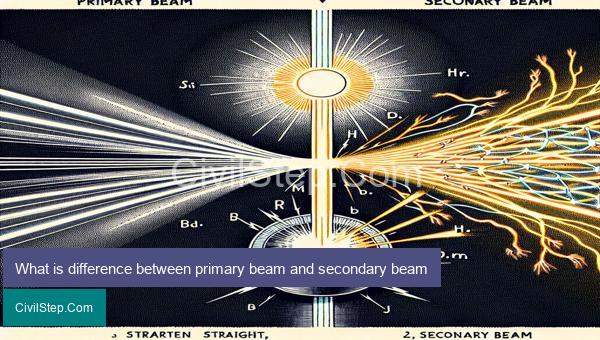
When designing and constructing load-bearing structures, it is crucial to understand the different types of beams that are used. Among the most commonly used are primary and secondary beams. These beams play a critical role in supporting the weight of a building and ensuring its stability. In this article, we will delve into the details of primary and secondary beams, exploring their definitions, differences, and functions. By understanding these two types of beams, we can gain a better understanding of the fundamentals of structural engineering and how beams contribute to the overall integrity of a building.
What is difference between primary beam and secondary beam

Primary and secondary beams are structural elements commonly used in building construction. They both play important roles in supporting the weight of the structure and transferring loads to the foundation. However, there are some notable differences between the two.
1. Purpose
The primary beam is the main structural member that supports the majority of the weight of the building and spans across the longest distance. It is the primary element in the structural system and is responsible for distributing the load from the floors and walls above to the columns and walls below.
On the other hand, the secondary beam is a supporting element that runs perpendicular to the primary beams. It works alongside the primary beams to distribute the load from the floors and walls above to the primary beams and columns below.
2. Size and Length
Due to its role in supporting heavier loads, primary beams are usually larger in size and longer in length compared to secondary beams. They are designed to span across a longer distance and carry heavier loads, thus requiring a larger cross-section.
Secondary beams, being supporting elements, are smaller and shorter in length compared to primary beams. They are designed to span between primary beams and support lighter loads, thus requiring a smaller cross-section.
3. Placement
Primary beams are typically placed at the bottom of the floor framing system and run in the direction of the longer span. They are supported by columns and walls at regular intervals.
Secondary beams are placed on top of the primary beams, perpendicular to them. They span in the shorter direction, connecting the primary beams and providing additional support to the floor framing system.
4. Spacing
The spacing between primary beams is greater compared to secondary beams. This is because primary beams are designed to span longer distances and support heavier loads, therefore requiring less support. In contrast, secondary beams are placed at smaller intervals to provide additional support to the floor framing system and reduce the span length of the primary beams.
5. Design and Analysis
Primary beams are designed to resist bending and shear forces caused by the self-weight of the structure and the loads from the floors and walls above. They undergo comprehensive structural analysis to ensure they can withstand the expected loads.
Secondary beams, on the other hand, are mainly designed for the distribution of loads and do not undergo as much rigorous analysis as primary beams.
In conclusion, primary and secondary beams have different roles and characteristics in a building’s overall structural system. While primary beams carry the heavier loads and span longer distances, secondary beams provide additional support and aid in load distribution. Both of these elements are crucial in ensuring the stability and integrity of a structure.
Conclusion
In conclusion, understanding the differences between primary and secondary beams is crucial in the construction and design process of any structure. Primary beams bear the majority of the load and provide the main support for a building, while secondary beams provide additional support and distribute the load evenly. It is important to carefully consider the placement and size of both primary and secondary beams in order to ensure structural integrity and safety. Additionally, incorporating the proper materials and designs for primary and secondary beams can greatly enhance the overall strength and stability of a structure. By taking the time to learn about and properly incorporate these important components in construction, we can ensure the longevity and safety of our buildings and infrastructure.
